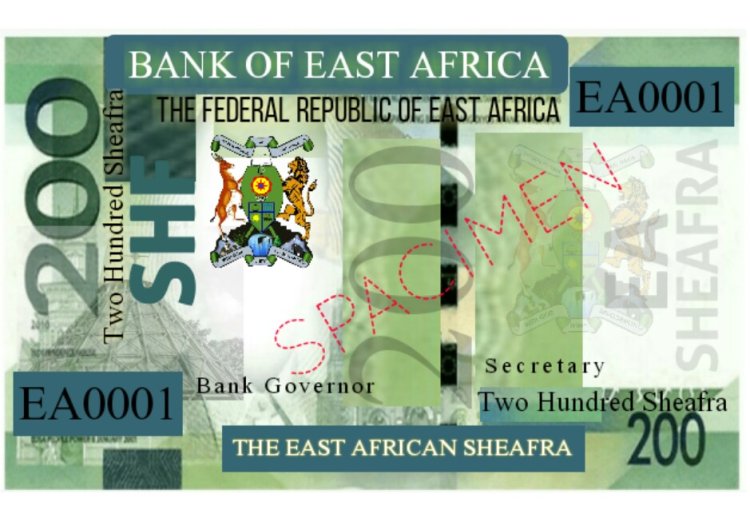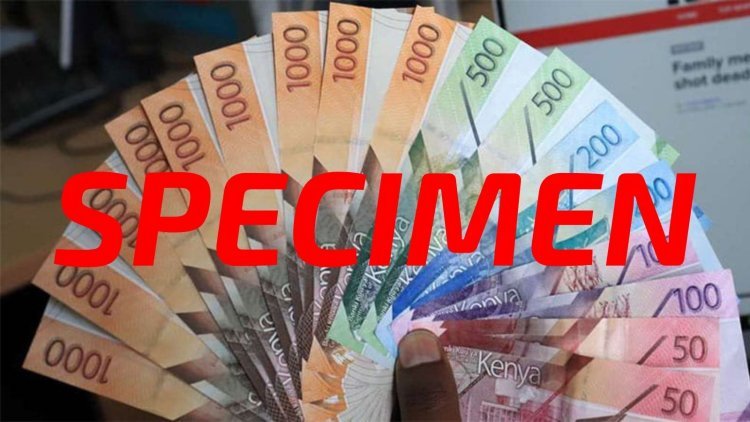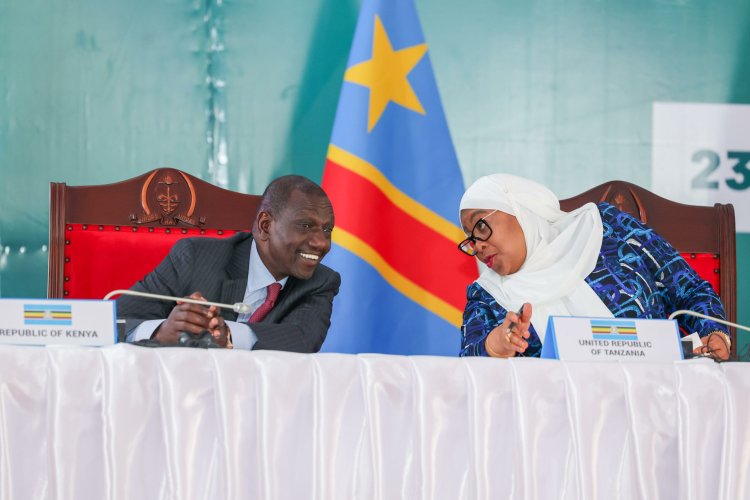SHEAFRA: Details Of EAC Currency That Could Save Kenya's Economy
The conversation on the introduction of the common currency for East Africa and probably even growth to an African common currency (AFRO) is good news to the region.

The East African Community Interruling Party Union (EAC-IPU) on Wednesday, January 3 made public details of a new unified currency that some economic experts believe could save Kenya's worsening economy.
Introducing the SHEAFRA, which means Shilling of East Africa and Franc and the legal tender will be abbreviated as Shf.
"One (EA.SHF1) East African SHEAFRA is Valued at TSh.2800/= (Ksh175.35) Tanzania Shilling to make US$0.76 Dollars. Almost a Dollar.
"That means US$1 is equivalent to EA.SHF 1.32 East African Sheafra and this will make a Sheafra the Africa's Most Viable and most Powerful currency," stated EAC-IPU in part.

An image of a bundle of notes. /FILE
The conversation on the introduction of the common currency for East Africa and probably even growth to an African common currency (AFRO) is good news to the region.
This would mean, enhancing economic integration among East African countries, simplifying trade, reducing currency exchange costs, and promoting price stability.
Also, the incoming currency would be a big boost to trade and investment, as well as facilitate cross-border transactions, and foster a sense of regional unity and cooperation among member nations.
The catch is the implementation which would require seamless coordination and cooperation among the eight EAC countries to fast-track successful adoption.
The eight EAC Member States include Burundi, the Democratic Republic of Congo (DRC), Somalia, Kenya, Rwanda, South Sudan, Uganda, and Tanzania.
Plans for a single currency in the region began as far back as 2020 when EAC announced that partner states were in the process of harmonizing critical policies and putting in place the requisite institutions to attain a single currency for the region by 2024 as outlined in the EAC Monetary Union Protocol.
EAC Secretary General Amb. Liberat Mfumukeko said on January 27, 2020, that the Bill for the establishment of the East African Monetary Institute (EAMI) had already been assented to by the Summit of Heads of State.
This would set the precedence for the EAMI to later be transformed into the East African Central Bank which would issue the single currency, thus the power to issue national currency would be transferred from governments to the common institution.
“The establishment of this institute will help to provide impetus towards the formation of the East African Monetary Union, which is the third pillar of our integration,” said Amb. Mfumukeko.
Amb. Mfumukeko disclosed that the Council of Ministers had approved the EAC Domestic Tax Harmonization Policy, adding that proper implementation of the policy would reduce tax competition thereby enhancing cross-border trade and investment in the region.
However, Central Bank Governors from EAC member states postponed plans for a 2024 launch to 2027 following an EAC meeting held at Maanzoni Lodge in Machakos County.
Speaking during a five-day retreat for all EAC Staff on January 12, 2023, EAC Secretary General Peter Mathuki indicated that the Council of Ministers was ready to decide on the location of the East African Monetary Institute by the end of 2023.
In March 2023, the Central Bank Governors of East Africa decided to extend the adoption of a single currency to 2031 during a meeting held in Burundi.
The introduction of the single currency could see EAC join the likes of Europe whose Euro (currency code EUR) is used by 20 out of the 27 member states of the European Union (EU).
The euro is the second-largest reserve currency as well as the second-most traded currency in the world after the United States dollar.


 admin
admin 




